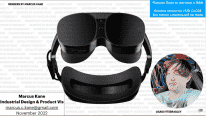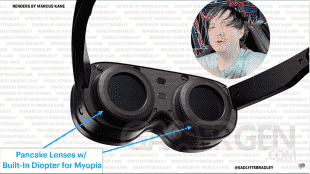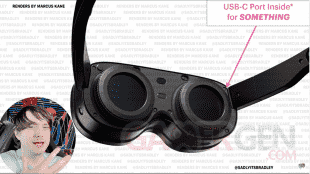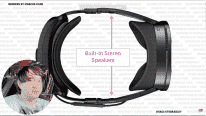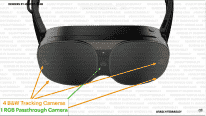In a period when the profusion of new helmets VR is clearly felt, here is the manufacturer HTC VIVE would plan to launch a modular helmet for the year 2023 according to the YouTuber always very well informed SadlyItsBradley.
Bradley begins his video with a disclaimer explaining that info and features helmet VR that he announces come from several sources working in the industry and more precisely from production chains. Notably known for his 3D renderings, his favorite collaborator Marcus Kane once had fun modeling what the helmet might look like.
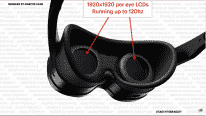
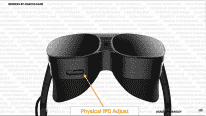
the YouTuber warns that, although it isa modular helmet that acts as both goggles and a helmet VRits design would make it much closer to a VIVE Focus 3 than a VIVE Flow. This would be equipped with two LCD panels pancakes with a definition of 1920×1920 per eye and a frequency that can go up to 120 Hz.IPD would be adjustable via a knob (as on Meta Quest 1) and, big surprise, it would be possible as on the cameras or video cameras of settle the focus lenses to match our eyesight, glasses wearers would appreciate! Another surprise, a USB-C slot would be in the upper right corner (right next to the second lens), probably to insert a system ofEye Tracking or of Face Tracking (which could be sold as an option).
On the sound side, the helmet would have, like the PSVR 2 integrated stereo speakers on each side of the strap. The front of the helmet would be equipped witha color camera for pass-through and four in black and white serving the tracking controllers. Speaking of the latter, these should be strictly identical to those currently fitted to the VIVE Focus 3.
Where the modular side would take on its full meaning would be in the possibility of removing the strap, as well as the front and the back of the helmet, to use the device as glasses. Note that in headset mode, you could still put a backup battery. Let’s continue on the practicality, since the machine would be designed in such a way that it can be easily folded and stored. And the best for the end, the processor should be more powerful than that of the Meta Quest 2the constructor could use a XR2 modified including a SXR-2230P engraved in 4 nm, with a Adreno 740 GPU (against 650 for the Quest 2), and which would run on an LPDDR5 RAM system. The price meanwhile would be estimated at around $800. Is this the end of helmets revolving around 350 euros?


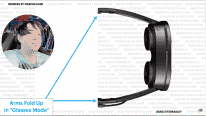
After the announcement of the Pimax Portal, we have to believe that manufacturers have taken a liking to manufacturing modular or all-in-one devices rather than designing several machines at the same time. Perhaps a sign of an industry that can no longer afford it, or at least much more difficult than before.
